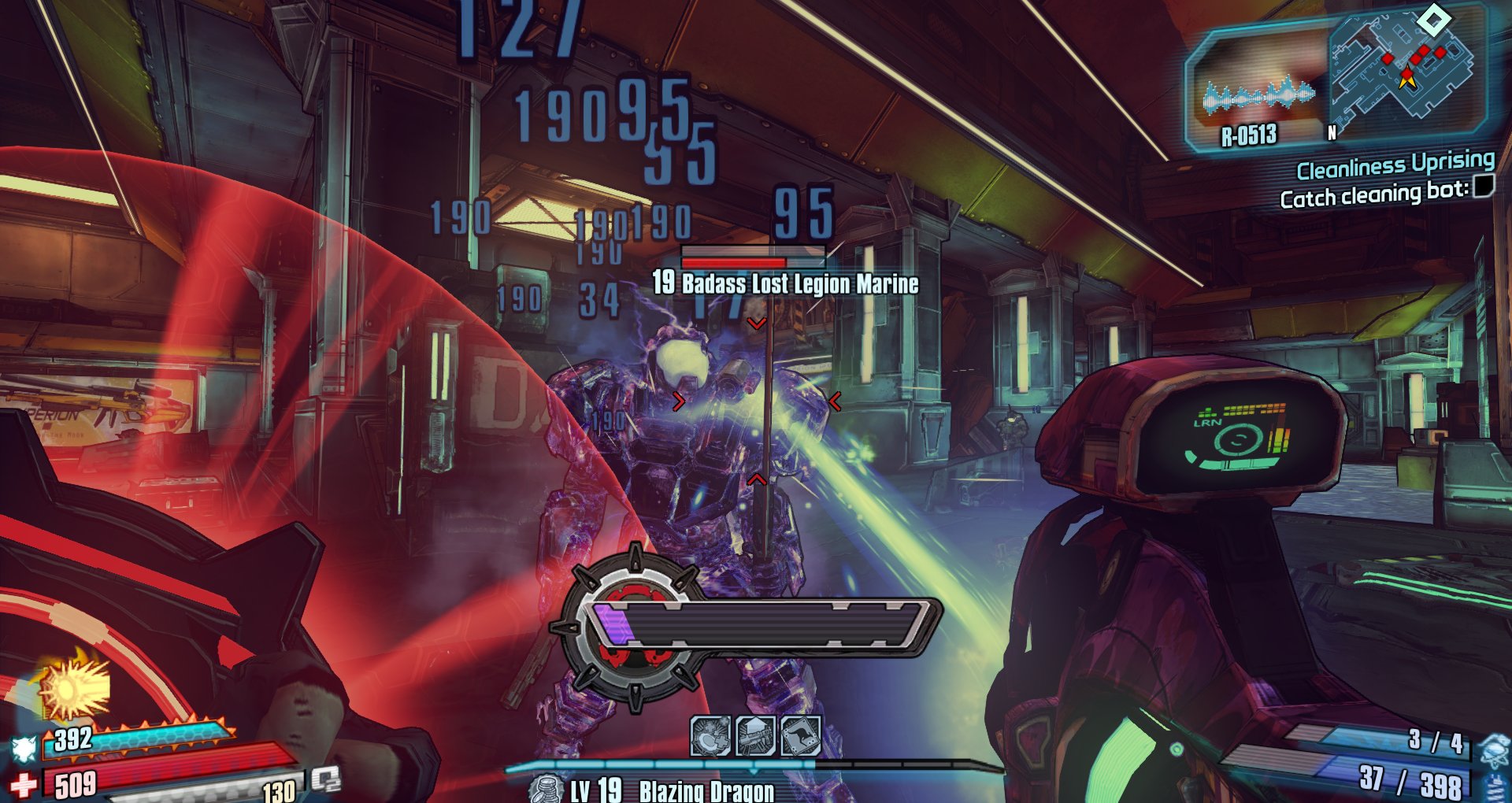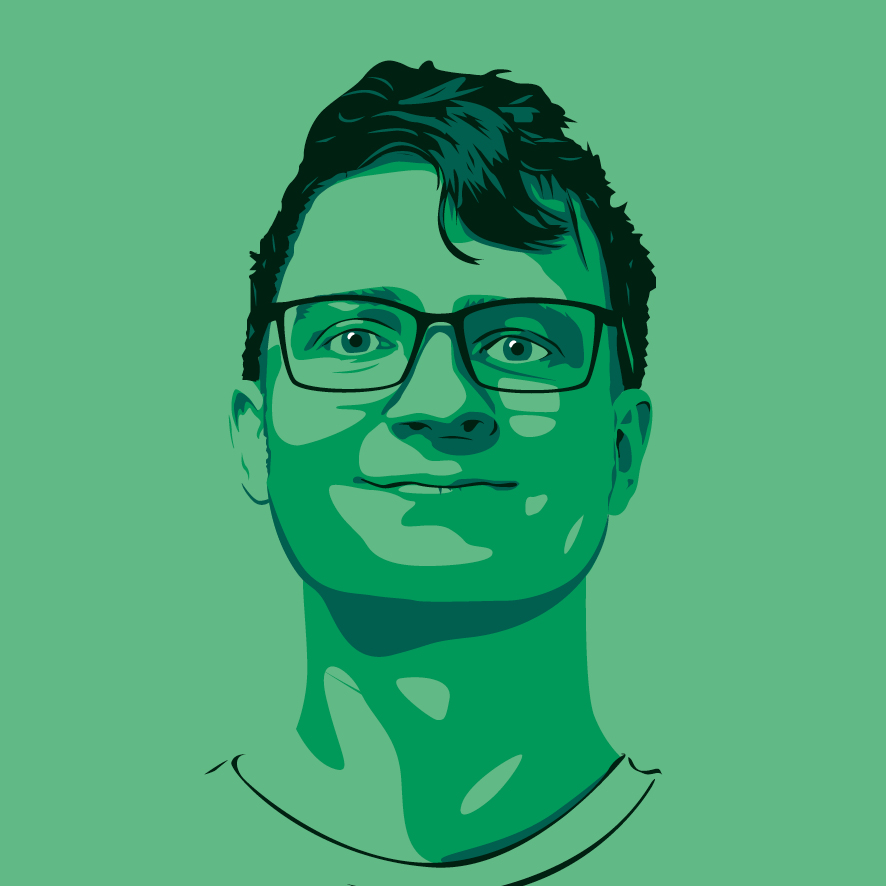Our Verdict
A well-executed but thoroughly unambitious extension of Borderlands 2. Low-grav jumping adds a new dimension to combat.
PC Gamer's got your back
What is it? Borderlands 2 with low gravity.
Play it on: Dual-core CPU, 2GB RAM, GEForce 9800GT/Radeon 4870
Reviewed on: LPC Jr.
Price: $60/£40
Copy protection: Steam
Release date: October 14, 2014
Publisher: 2K Games
Developer: 2K Australia, Gearbox Software
Multiplayer: 4-player co-op
Link: Official site
Fifteen hours in, I realize that I’m playing Borderlands: The Pre-Sequel as a flying Ghostbuster Captain America. My character class, Gladiator, grips a round shield in her left hand when her class ability is triggered, absorbing or reflecting damage before hurling the shield like a boomerang-frisbee. In my right hand is my favorite weapon, Miss Moxxi’s Vibra-Pulse, a laser gun that spits a wavy line of volts like Egon’s proton pack. And the shock damage it deals cascades like Diablo’s chain lightning spell, arcing between enemies in reach. As I’m electrocuting and shield-tossing, I’m floating through the air, kept aloft by the low gravity of Elpis, the Pre-Sequel’s lunar landscape.
Borderlands is best when its irreverence is reflected in its combat, when it’s layering the insanity of its characters atop weird weapons and enemies. Near-weightlessness is a terrific tweak to that formula; launching rockets at vulgar mutants and mechs its more playful when you (and your co-op teammates) are lilting softly through the air. I bounded my way through most of the game; tapping the jump button while airborne spends a single mid-air boost from your Oz kit (a new item that takes the place of relics), and hitting Ctrl sinks your character straight down to the surface.
The Oz kit is also what keeps you breathing while you’re out in the vacuum of space. I was worried that oxygen would turn out to be an annoying fuel gauge in The Pre-Sequel, but refills are plentiful and having to manage your air counter in the middle of a shootout discourages you from cowering behind cover. Oxygen also comes into play a little bit on offense: headshots knock out some enemies’ breathing masks, and some grenades sap oxygen. You’ll hear a new line or two when you shoot the air out of Borderlands’ bad guys, but basically it amounts to being another form of elemental damage.
The changes to movement bring novelty and a weird gracefulness to Borderlands’ combat. But otherwise, The Pre-Sequel feels like a super-sized mound of Borderlands 2 DLC. While the new setting, classes, and weapon types reinvigorate things a bit, The Pre-Sequel doesn’t deviate much from the feel and format of Borderlands 2. It’s fun, but it’s also exceptionally familiar.
Rayguns and railguns
I finished The Pre-Sequel wanting a greater variety of missions, especially missions that made creative use of the new movement mechanics, of which there are nearly none. Almost every story and side mission I completed followed the same structure: go to a location, press the use key on a computer console or character, and shoot some enemies along the way. Even quests that are thematically different, like delivering flowers to suitors for Nurse Nina (the stand-in for Dr. Zed), or exploring ice caves to place a mining drill, or retrieving a scientist’s lost teddy bear, feel like equivalent errands punctuated by similar firefights. My least favorite were missions where I had to scour a room for a hidden Echo device, about as fun as searching someone else’s room for a missing wallet. The Pre-Sequel would’ve benefited from a large-scale combat sequence or something like an escort-sniping mission.

The problem with mechanically simple missions is that their fun relies entirely on funny dialogue and interesting firefights, both of which are inconsistent throughout The Pre-Sequel. Combat is occasionally great—one of the first bosses pounces and floats between a bunch of indoor platforms, some of which are electrified. Chasing him without shocking yourself and fending off his airborne minions was frantic and tough.
The Pre-Sequel ends on a high point too. The last chapter mercilessly throws a variety of jumping, somersaulting, flying, cloaked, ranged, and melee aliens and soldiers at you alongside enemies that, similar to the Goliaths in BL2, enter a cocoon state and level up if you don’t kill them quickly enough. It’s a terrifically exhausting sequence that demands careful spending of abilities and the mid-air dash maneuver to dodge and reposition yourself for reloads. Most of the skirmishes at the end of the game had me cycling through all four of my weapons, throwing multiple grenades at a time and narrowly making it out alive. I wish more of The Pre-Sequel had put me in this kind of pure chaos that the last section of the game did.
Most of the skirmishes at the end of the game had me cycling through all four of my weapons.
New guns help mitigate these threats. Cryo weapons freeze enemies into solid blocks when their elemental effect triggers—I liked sniping jetpacking bandits into ice cubes to make them plummet back to earth. Better are the new lasers: wrangling a wavy line of energy in mid-air is like trying to spray someone with a firehose after leaping off a trampoline.

That’s no moon
But broadly, that’s the extent of what’s new in The Pre-Sequel; there aren’t many other new weapon types or attributes to fill out the armory further. Having spent a hundred-plus hours with the series, everything else feels exceptionally templated. Enemies pour out of spawning points that are helpfully beside explosive barrels and sets of ammunition containers. I was starved for a mission that wasn’t a fetch quest, and though pieces of Elpis are gorgeous, the orbiting space station that you spend about half of the game on is a set of familiar, futuristic city interiors lined with unpopulated facades. Elpis is meant to be the Australia of Borderlands, and it’s a decent frontier, but the game as a whole feels underpopulated. There aren’t many NPCs that you can have meaningful reactions with.
I love the way that 2K Australia pokes some reverent fun at its homeland, though. The best dialogue in the game comes from the inappropriately cheerful citizens of Elpis, who casually shrug off the moon’s many dangers and drop exaggerated Australian slang. New characters—and cameos from old ones like Roland and Sir Hammerlock—miss more than they hit. Jack has some charming one-liners, but as The Pre-Sequel is primarily his backstory, he spends most of the game being kind and helpful—character development that came off as more off-putting than interesting to me.

Loot-wise, a new station, The Grinder, gives you something to do with unwanted rare guns. Three weapons of the same rarity can be loaded in and destroyed to spit out a weapon of higher rarity. When operating the machine, you can optionally spend moonstone, the resource used to upgrade ammo capacity, to create a “luneshine” weapon, which adds a bonus attribute. It’s a good addition to the game: I found myself using The Grinder a lot, and it spat out weapons that stuck with me for a few hours.
The Pre-Sequel is a happy to be Just Another Borderlands Game. I enjoyed it for that, but I also finished it thinking my time would’ve been better spent on one of the more original games that’ve released this year. I love seeing Borderlands embrace the FPS trend of unconventional movement. Apart from the low-gravity leaping, though, The Pre-Sequel doesn’t do much to freshen what we’ve been playing since 2012.
A well-executed but thoroughly unambitious extension of Borderlands 2. Low-grav jumping adds a new dimension to combat.

Evan's a hardcore FPS enthusiast who joined PC Gamer in 2008. After an era spent publishing reviews, news, and cover features, he now oversees editorial operations for PC Gamer worldwide, including setting policy, training, and editing stories written by the wider team. His most-played FPSes are CS:GO, Team Fortress 2, Team Fortress Classic, Rainbow Six Siege, and Arma 2. His first multiplayer FPS was Quake 2, played on serial LAN in his uncle's basement, the ideal conditions for instilling a lifelong fondness for fragging. Evan also leads production of the PC Gaming Show, the annual E3 showcase event dedicated to PC gaming.


